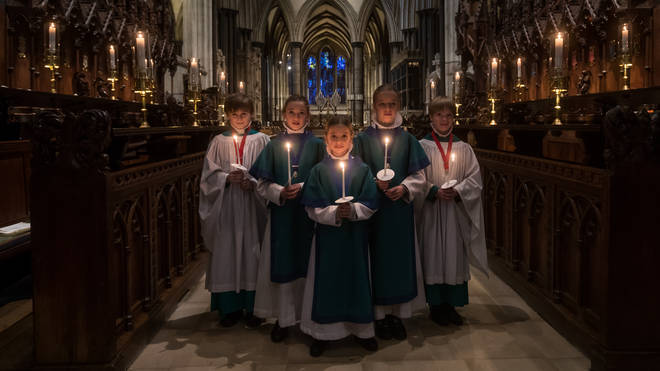... and what's the story behind the carol?
By: Helena Asprou, ClassicFM London
It's one of the best-known pieces of Christmas music. Here’s everything you need to know about the timeless carol 'Hark! The Herald Angels Sing'.
The lyrics for ‘Hark! The Herald Angels Sing’ were written by Methodist Charles Wesley in 1739. But the tune that's most familiar today was written by Felix .
Since then, ‘Hark! The Herald Angels Sing’ has become one of the most widely sung carols in the UK – and yet, many people are unaware of the fascinating story behind it.
This carol first appeared in the collection Hymns and Sacred Poems – but Charles Wesley's words were sung to a somewhat gloomy melody, rather than the joyous version we all know and love today.

What is ‘HARK! The Herald Angels Sing’ actually about?
The purpose of the carol was to explore the spiritual theme of ecotheology, linking Christ’s intention to redeem not only humankind, but nature as a whole.
The words ‘Peace on earth and mercy mild, God and sinners reconciled’ in verse one, and ‘Light and life to all He brings, Ris'n with healing in His wings’ in verse three represent this contrast.
Are there other adaptations of this carol?
Wesley’s original words for the carol began with the lyrics: “Hark how all the Welkin rings, Glory to the King of Kings”, before being rewritten by George Whitefield in 1754 – to begin with the couplet we know today – and again in 1782, giving us the complete text we sing now.
The tune we know today was adapted by the English composer William H. Cummings from a melody in Felix Mendelssohn's 1840 choral cantata Festgesang.

Today, the version of ‘Hark! The Herald Angels Sing’ that we're familiar with generally stays true to the fine details of Cummings’ adaptation (particularly its harmonisation).
But over the years, composers have written descants for the final verse. Perhaps the most famous is the one written by Sir David Willcocks in 1961 for the annual Festival of Nine Lessons and Carols at King's College, Cambridge.
So, what are the words to the most recent version of this jubilant piece?
Lyrics to Hark! The Herald Angels Sing
Hark! The herald angels sing,
"Glory to the newborn King!
Peace on earth and mercy mild,
God and sinners reconciled."
Joyful, all ye nations rise,
Join the triumph of the skies,
With th’angelic host proclaim:
"Christ is born in Bethlehem."
Hark! The herald angels sing,
"Glory to the newborn King!"
"Glory to the newborn King!
Peace on earth and mercy mild,
God and sinners reconciled."
Joyful, all ye nations rise,
Join the triumph of the skies,
With th’angelic host proclaim:
"Christ is born in Bethlehem."
Hark! The herald angels sing,
"Glory to the newborn King!"
Christ by highest heav'n adored,
Christ the everlasting Lord!
Late in time behold Him come,
Offspring of a Virgin's womb.
Veiled in flesh the Godhead see,
Hail the incarnate Deity,
Pleased as man with man to dwell,
Jesus, our Emmanuel.
Hark! The herald angels sing,
"Glory to the newborn King!"
Christ the everlasting Lord!
Late in time behold Him come,
Offspring of a Virgin's womb.
Veiled in flesh the Godhead see,
Hail the incarnate Deity,
Pleased as man with man to dwell,
Jesus, our Emmanuel.
Hark! The herald angels sing,
"Glory to the newborn King!"
Hail the heav'n-born Prince of Peace!
Hail the Son of Righteousness!
Light and life to all He brings,
Ris'n with healing in His wings.
Mild He lays His glory by,
Born that man no more may die,
Born to raise the sons of earth,
Born to give them second birth.
Hark! The herald angels sing,
"Glory to the newborn King!"
Hail the Son of Righteousness!
Light and life to all He brings,
Ris'n with healing in His wings.
Mild He lays His glory by,
Born that man no more may die,
Born to raise the sons of earth,
Born to give them second birth.
Hark! The herald angels sing,
"Glory to the newborn King!"
